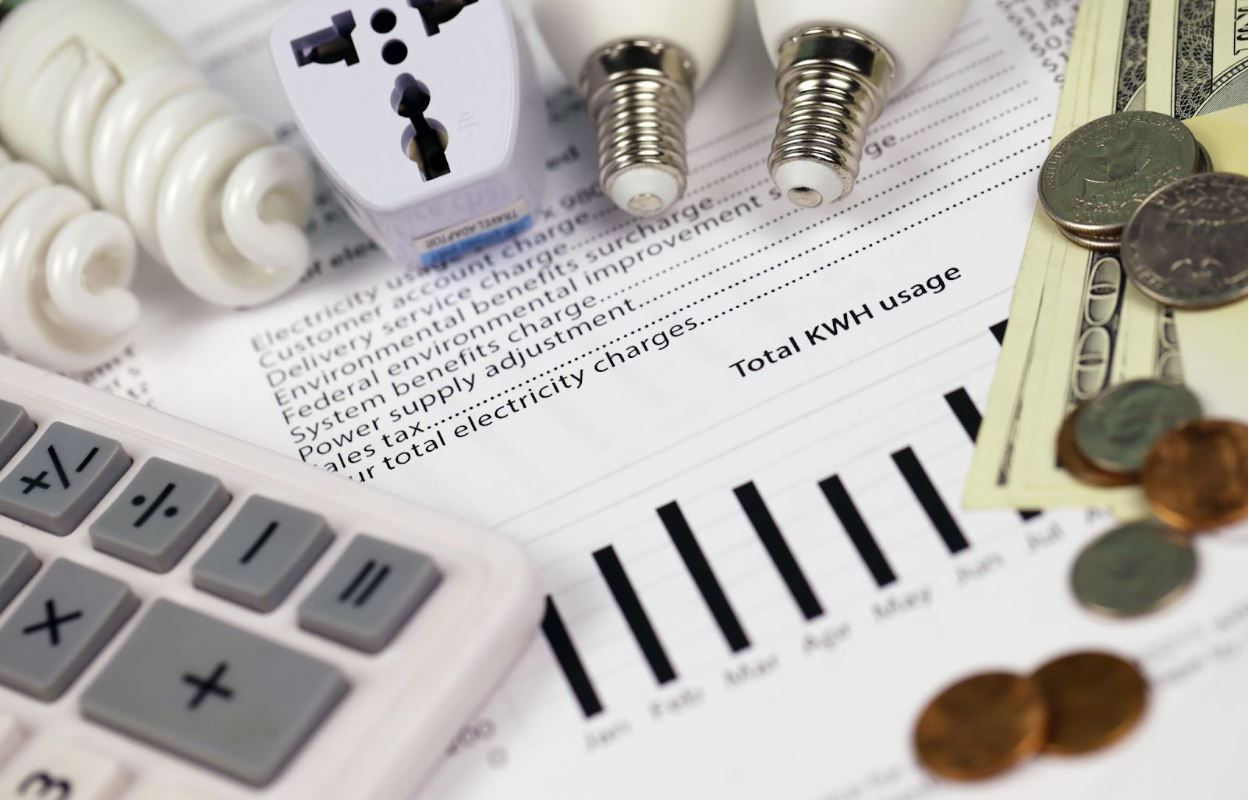Businesses often face fluctuating electricity rates, making budgeting a challenge. Rates change unexpectedly, influenced by various factors that aren't always obvious. Every element, from the season to the energy source, plays a role in rate shifts. Understanding these variables is essential for better financial planning for business owners.
Seasonal Demand and Electricity Rates
Seasonal demand patterns directly influence electricity costs, making certain times of the year significantly more expensive. Energy usage surges during extreme temperatures, whether hot or cold. Businesses experience noticeable shifts in costs, especially during peak seasons.
Summer
Demand spikes as businesses rely on air conditioning to maintain comfort. This increase in demand pushes rates higher as the power grid becomes stressed. Utility companies may implement additional charges during these times to manage peak demand. Businesses that rely on cooling face higher costs, impacting their overall budget.
Winter
Heating needs escalate, increasing electricity usage for commercial and industrial properties. Cold weather leads to higher energy consumption, impacting electricity costs. Additional energy is required to heat large spaces, increasing overall usage. Businesses in colder climates are particularly affected by winter energy demands.
Spring and Fall
Moderate temperatures during these seasons often mean less demand for heating and cooling systems. It typically results in more stable or even lowered rates. Many businesses find these seasons ideal for energy savings due to lower overall usage. Rate reductions during these periods can provide budget relief before the peak summer and winter months.
Types of Energy Sources Affecting Rates
The energy sources that generate electricity are significant factors in businesses' rates. Sources like fossil fuels, renewables, and nuclear power have different cost structures, affecting the stability and variability of electricity prices.
Fossil Fuels
Electricity derived from fossil fuels, like coal or natural gas, is often subject to price swings. Global fuel markets heavily influence these costs, making rates less predictable. Political and economic factors like trade policies also impact fossil fuel costs. As fuel costs rise, businesses can see an immediate impact on their electricity bills.
Renewables
Solar, wind, and other renewable sources usually lead to lower electricity rates when available. However, they sometimes face supply issues, especially during calm or cloudy weather. As renewable technology advances, energy rates have the potential to stabilize further. Businesses with renewable sources nearby may see more consistent rates over time.
Nuclear Power
While nuclear energy provides stable rates due to its consistent production, high maintenance costs can affect prices. When plants undergo maintenance, there's often a temporary shift to more expensive sources. Nuclear energy, however, tends to be more resilient to market fluctuations. Businesses in areas reliant on nuclear power may experience fewer rate swings.
Government Regulations and Electricity Rates
Government regulations and policies, from environmental taxes to renewable energy incentives, can add or reduce costs. These policies aim to balance environmental and economic needs but can lead to additional business expenses.
Environmental Taxes
Carbon taxes or penalties on fossil fuels increase electricity rates. Energy providers pass on cost increases to companies using power derived from these sources. These taxes encourage companies to seek alternative, cleaner energy sources, which can represent a significant expense for businesses relying on fossil fuel energy.
Renewable Incentives
Governments often offer incentives or subsidies to encourage clean energy. These financial breaks help reduce the electricity costs for businesses that opt for renewable energy. Incentives may also include tax breaks for energy-efficient installations. Businesses using renewable energy often reduce their overall electricity costs through these programs.
Grid Maintenance Costs
Regulatory bodies may impose fees on electricity providers to ensure reliability. These fees, meant to cover infrastructure and grid improvements, often trickle down to businesses. Grid maintenance and upgrades are necessary for a safe and consistent power supply. Businesses in regions with extensive infrastructure needs may face higher costs.

Demand-Based Pricing and Business Electricity Rates
Demand-based pricing models mean electricity rates can vary throughout the day. Higher usage times, known as peak hours, lead to higher rates. This pricing model often impacts business budgets when electricity demand peaks.
Peak Hours
Electricity rates are highest during intense grid use, such as mid- and late afternoon. That affects businesses that are heavily reliant on energy during these periods. Companies may consider adjusting work hours to avoid peak times. Reducing usage during peak hours can significantly lower electricity bills.
Off-Peak Hours
Electricity rates drop during non-peak times. Shifting energy usage to these times can help reduce overall costs. Lower rates during these times make it easier to manage energy expenses.
Weekends and Holidays
Demand generally decreases on weekends and holidays. Thus, electricity rates are lower. Businesses operating during these times may benefit from cost savings. Off-peak operations can lead to consistent savings over time. This advantage is beneficial for companies with flexible work schedules.
Location-Based Factors and Regional Electricity Rates
Different regions rely on various energy sources, which affect overall cost. Local grid infrastructure and state-specific policies also contribute.
Urban vs. Rural Areas
Urban areas may have higher rates due to the cost of maintaining dense grid infrastructure. Rural areas might experience different rates due to unique infrastructure needs. Power supply challenges in rural areas can sometimes lead to unreliable service. Urban businesses may also pay more to support local power distribution networks.
Grid Reliability
Areas with aging or unreliable infrastructure often pass the cost of maintenance and upgrades to consumers. It can lead to higher rates for businesses in those regions. Investments in modern grids reduce outages and increase reliability. For companies, reliable grids mean fewer interruptions and consistent rates.
Local Regulations
Some states enforce stricter energy regulations, including additional fees or incentives. Local policies can have a direct effect on business electricity costs. Differences in rules mean businesses in some areas have competitive rate advantages. Being aware of local policies helps companies to predict rate changes more accurately.
Market Conditions and Their Impact on Business Electricity Rates
Market conditions create dynamic electricity rates, requiring businesses to monitor trends and adjust accordingly. Businesses that track these conditions can better anticipate changes in their energy costs.
Fuel Price Fluctuations
Changes in fuel costs directly impact electricity rates, primarily if fossil fuels supply a large portion of local energy. Prices can vary dramatically depending on global supply and demand. Businesses dependent on fossil-fuel-generated electricity can see rates change overnight. Managing costs becomes challenging as fuel prices fluctuate unpredictably.
Economic Health
During economic booms, electricity demand can rise, pushing rates higher. Conversely, recessions can lead to reduced rates due to lower demand. Economic cycles influence all types of expenses, including energy. Monitoring economic trends can help businesses forecast electricity rate shifts.
Inflation and Cost-Push Factors
Rising production costs from inflation may increase rates. Higher labor, materials, or fuel costs can drive electricity prices up. Businesses may need to adjust budgets as inflation affects utility bills. In inflationary periods, careful energy use becomes even more essential.
Planning for Sustainable Electricity Cost Management
Using renewable sources, enhancing energy efficiency, and managing loads reduce costs. Planning around these sustainable strategies helps companies to keep their rates more predictable.
Energy Efficiency
Upgrading to energy-efficient appliances or lighting reduces power usage and can lower rates over time. Many companies also invest in energy-efficient HVAC systems to further decrease consumption. Efficiency measures benefit both the environment and the bottom line. Reducing energy waste lowers overall utility expenses.
On-Site Renewables
Businesses with solar panels or wind turbines reduce dependency on the grid, lowering their exposure to fluctuating rates. Despite upfront costs, on-site renewable systems offer long-term savings. Companies can also earn credits or incentives for generating excess power.
Load Management
Shifting energy-heavy tasks to off-peak times helps manage electricity costs. By adjusting schedules, businesses can leverage lower rates. Load management strategies help companies avoid high rates during peak hours. This approach provides a practical way to reduce monthly energy expenses.
The Role of Energy Audits in Managing Electricity Rates
Energy audits are powerful tools for businesses looking to manage electricity rates. They can provide actionable insights to reduce energy consumption and control costs by identifying inefficiencies and areas for improvement. For companies aiming to understand their energy usage better, an audit is often the first step toward making informed changes.
Energy Audit Benefits
An energy audit helps businesses discover where they may be wasting energy. Auditors examine equipment, HVAC systems, lighting, and insulation to identify areas that could be optimized. The benefits include lower rates and reduced overall energy consumption, leading to long-term savings. Audits often reveal simple, cost-effective solutions that significantly impact energy expenses.
Types of Energy Audits
There are different levels of energy audits, from basic walk-throughs to detailed analyses. A basic audit provides quick wins by highlighting apparent areas of improvement, such as lighting upgrades or temperature control adjustments. Comprehensive audits go deeper, assessing the efficiency of machinery, production lines, or office equipment and calculating the potential cost savings from each upgrade. Businesses can select the audit type based on their needs and budget.

Common Audit Recommendations
Following an audit, companies receive tailored recommendations. Frequently suggested improvements include:
-
- Switching to LED lighting.
- Improving insulation.
- Upgrading to energy-efficient appliances.
- Installing motion sensors for lighting.
Many businesses also find savings in adjusting HVAC systems, upgrading older machinery, or recalibrating equipment for optimized performance. Implementing these changes can reduce peak-time electricity usage, thus lowering demand-based charges.
Long-Term Savings from Audits
Regular audits allow businesses to keep energy costs low by continuously updating and refining energy management practices. As equipment ages or building structures change, recurring audits ensure that a business remains energy-efficient. Over time, these practices lead to consistent savings and help enterprises stay competitive by managing operational costs. Some companies find that the initial cost of an audit is quickly offset by the savings generated from implementing its recommendations.
Strategic Electrical Services for Business Growth
Electricity rates impact every business, and understanding the factors behind them can create significant advantages. Companies can take control of their energy expenses by paying close attention to seasonal demand, choosing energy sources wisely, navigating regulatory requirements, and leveraging demand-based pricing. Electrical service providers are critical in this process, offering expertise in energy audits, efficiency upgrades, and renewable solutions that align with business needs.
Partnering with skilled electrical service providers enables businesses to identify and implement cost-saving strategies, from optimizing demand usage to integrating sustainable energy sources. With the right electrical services and strategy, companies save on costs and achieve more predictable electricity rates. This forward-thinking approach empowers businesses to focus resources on growth, innovation, and long-term sustainability.
Explore more insights on managing business electricity costs on our GC Electrical Service Inc. blog.


